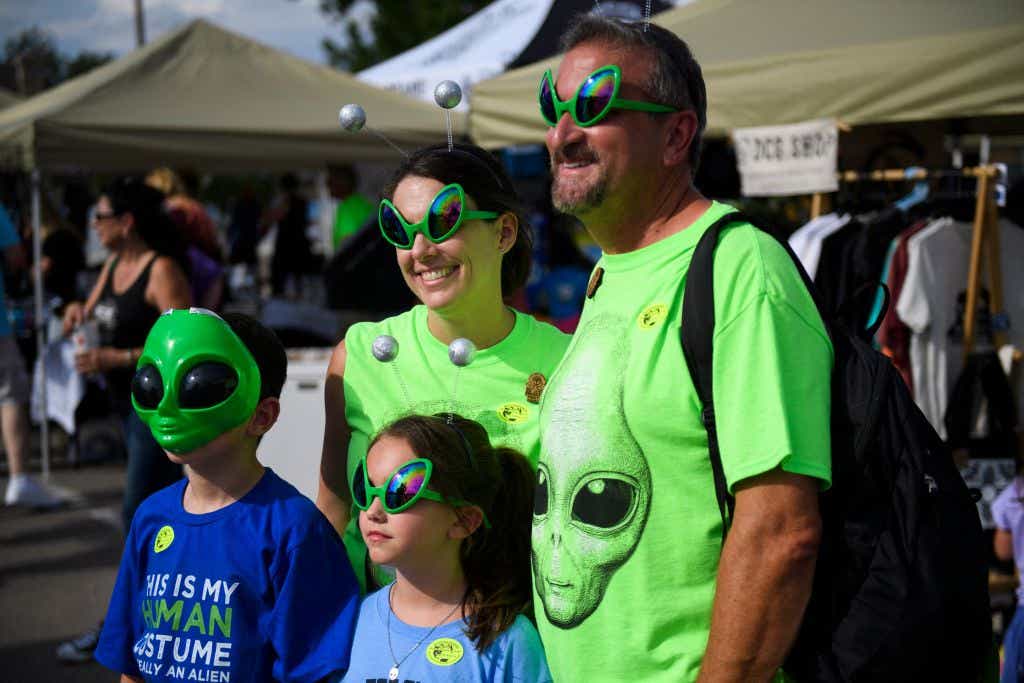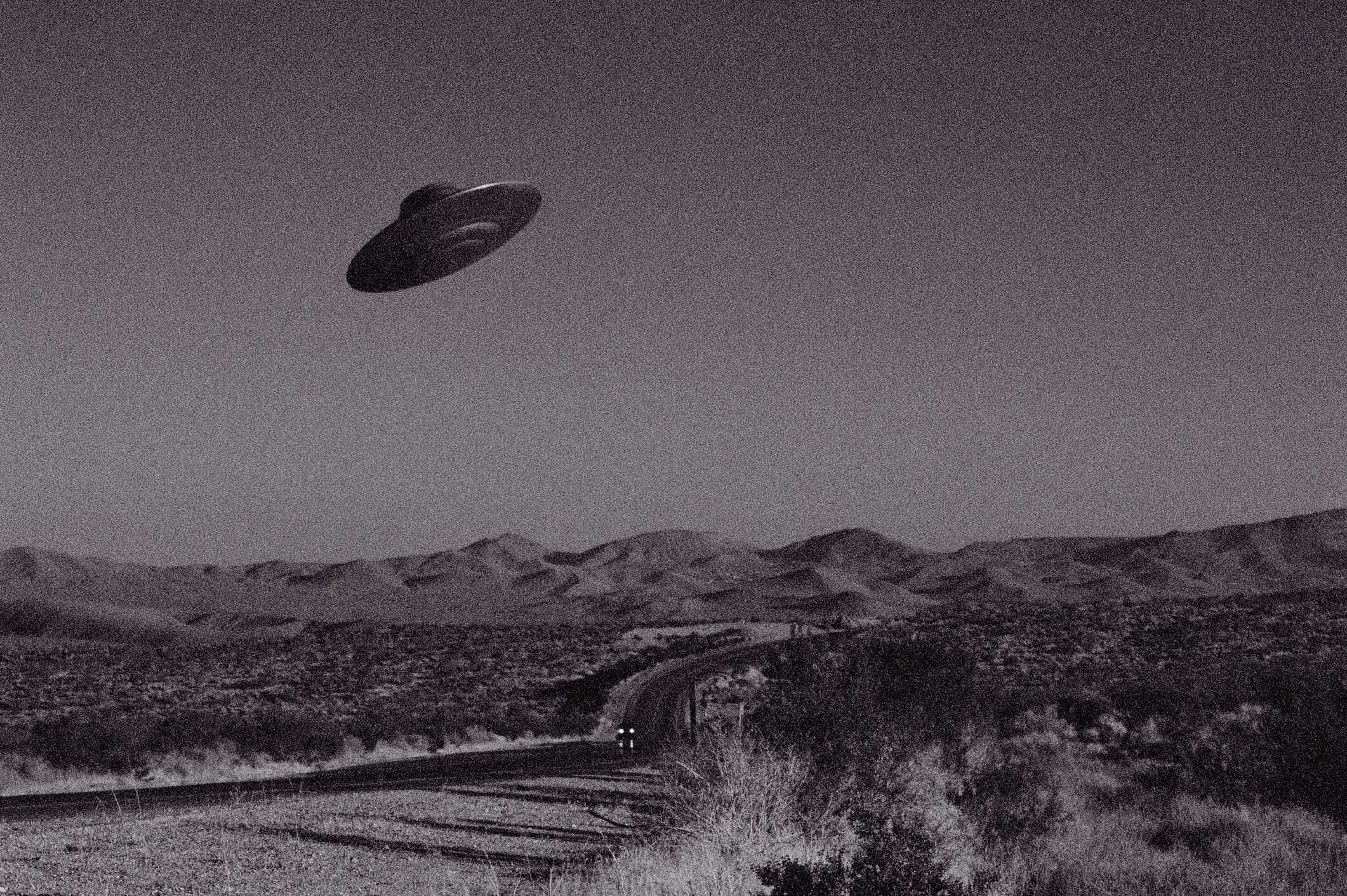I’ve spent the last two years, as part of my research for a new book on UFOs, studying one of the most fundamental human questions: “Are we alone?”
As part of that research, I’ve dug into the history of the U.S. military’s hunt for UFOs here on Earth, as well as the evolving astronomy and science efforts around what’s known as “SETI,” the search for extraterrestrial intelligence out across the universe. Usually, these two threads are treated differently by journalists and historians — there’s the “kooky” UFO history and the “serious” science of SETI — but to me, the two stories are very closely intertwined, not least of all because the question of whether aliens are visiting Earth is directly tied to whether aliens exist at all.

While humans have seen strange things in the sky since the earliest recorded histories, the modern flying saucer age dates back to the summer of 1947, when a wave of saucer sightings — including the now-infamous crash at Roswell — captured the nation’s attention. In the years since, Hollywood latched onto the mystery, and UFOs and aliens firmly lodged themselves in the public consciousness.
Yet 80 years into the quest to learn the truth about UFOs and understand whether we’re alone in the universe, we’ve come up frustratingly short of answers to either question. The answers I discovered in my book research, though, might surprise you: For one, the math is almost certainly on the side of the aliens, but they’re almost certainly too far away for us to have meaningful contact. We now understand that habitable planets are actually quite common across the universe. Even though there may be only a small number per solar system or galaxy, there are far more galaxies than we imagined — the James Webb space telescope, pointed at a single patch of the night sky that we believed was dark, uncovered 94,000 previously unknown galaxies in just that single corner. The math is incredible: The average galaxy is estimated to have perhaps 100 million stars — although the largest, known as supergiants, can contain 100 trillion — but even our “neighboring” galaxies are almost unfathomably far away. Astronomers define our galactic neighborhood as encompassing 100,000 other galaxies that stretch across more than 520 million lightyears of outer space.
Those vast gulfs of outer space mean that UFOs are unlikely to be extraterrestrial visitors — but it’s clear that there’s something out there, and that we aren’t particularly close to understanding what it is. The vast majority — perhaps even nearly all — of UFO sightings can be explained away by astronomical or meteorological events, or through tracing sightings to known aviation events. (Many UFO sightings today turn out launches of Starlink satellites, for instance.)

But not all sightings or encounters can be dismissed. The most puzzling witnesses to me are people like Lonnie Zamora, a local police officer in the small town of Socorro, New Mexico, who on April 24, 1964, was chasing a speeder out of town when he heard what he recognized as an explosion and then noticed what he thought was an overturned car in a ditch in the desert. He abandoned the chase and turned toward the vehicle; as he approached it in his white Pontiac cruiser, he saw what he thought were two figures outside it. He got out and as he moved closer, they got into the craft and it flew away. Terrified, he turned and ran — losing his glasses in the commotion. A New Mexico state trooper arrived moments later and found the Socorro officer petrified. There was also some physical evidence of a disturbance or landing near where Zamora said the craft had been.
There was no reason for Zamora, a respected, sober small-town cop, to invent such an escapade, and he went on afterward to have a seemingly normal life — and didn’t claim that aliens started visiting him every Thursday for tea. Something clearly had happened to him in the desert — but what?
The simplest answers are that he stumbled onto some kind of elaborate practical joke or hoax, or that he spotted part of a secret U.S. government space project; he was close to the White Sands Proving Ground and it was the heart of the space race, so maybe he accidentally spotted an experimental moon lander from the Apollo program — except that now, a half-century later, no evidence has emerged that the U.S. ever built such a craft.
There are other Zamoras — witnesses with compelling stories of unexplainable encounters who seemingly have no reason to lie and, to the contrary, much to lose from inventing giggle-worthy stories of UFOs. In recent years, as the U.S. government has re-engaged with the study of what it now calls UAPs — unidentified anomalous phenomena, an evolution from the term UFOs that’s meant to capture that not all encounters involve either flying things or physical objects — we’ve seen a number of naval aviators, some backed up by dramatic and puzzling videos, come forward to testify about their encounters with craft that they say defy known physics and appear to be technologies beyond anything the U.S. government possess.
To me, it seems clear that the answer — or, more likely, answers — to what UFOs actually are will emerge only as science and our understanding of the world around us advances. But one thing is certain: The world is far stranger and weirder than we think it is.
Garrett M. Graff is the bestselling author of Watergate — his new book, UFO: The Inside Story of the US Government’s Search for Alien Life Here―and Out There, is available now.









